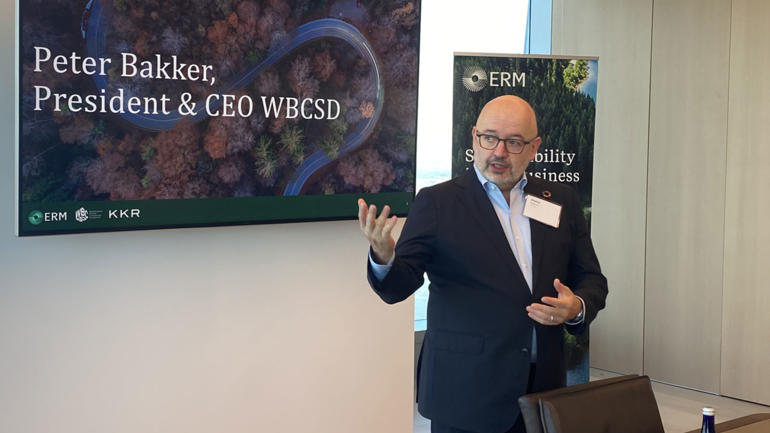As a dominant player in the global economy and as the world's largest emitter of carbon dioxide, integrating China into global sustainability efforts is not just important — it is absolutely essential. China's sustainability journey involves trade-off and challenges but without China's active participation, achieving international climate goals is simply not possible. That said, the country is transitioning towards a low-carbon economy, with goals to curb peak emissions by 2030 and achieve carbon neutrality by 2060 as outlined in its 14th Five-Year Plan.
When China reopened in 2023 after nearly three years of COVID-19 lockdown, returnees saw a remarkable transformation. By the end of 2022, 77 per cent of urban public transport consisted of "new energy vehicles" showcasing China's rapid adoption of clean energy solutions, rivaling global progress.
Under mounting global pressure to meet the goals of the Paris Agreement and limit global temperature increase to 1.5 degrees Celsius, the world has turned to businesses for sustainability solutions.
Chinese technologies in solar, wind, batteries, and electric vehicles now match or outstrip Western counterparts, demonstrating innovation at scale and speed.
Accelerating Environmental Accountability in China’s Sustainable Business Landscape
Businesses typically aim for profitability, meeting demand, and accountability for environmental and social impact. Responding to investor demand, Mainland China's stock exchanges have proposed environmental disclosures for large-listed companies, adopting a two-way impact approach, requiring reporting on both environmental impacts and risks.
What facilitates this process for Chinese companies is the comprehensive implementation framework, compared to the multitude of disclosures in Western markets, which lack standardization. The integration of global supply chains with China demands unified sustainability efforts to meet international standards like the European Union’s Carbon Border Adjustment Mechanism (CBAM), ensuring seamless global trade and environmental compliance.
China’s recent announcement of a national standard for corporate sustainability disclosure by 2030 – based on the ISSB frameworks - is another stride forward, having the country align their regulatory guidelines to that of international reporting standards, which will have a knock-on effect on all businesses operating in-country.
From my position on the China Council for International Collaboration on Environment and Development since 2012 and as a Belt and Road Initiative (BRI) advisor since 2017, it is clear to me that there is a lack of awareness about how well the Chinese industrial model aligns with global sustainability goals. This is precisely where the World Business Council for Sustainable Development (WBCSD) comes in to raise ambition and encourage companies to embrace change.
We are collaborating with member companies in China to achieve sustainability performance and adhere to disclosure frameworks. Additionally, China is becoming a hub for emissions removal and Carbon Capture, Utilisation and Storage (CCUS) innovation, providing more tools for businesses to manage carbon emissions.
At WBCSD, we have taken a comprehensive approach towards encouraging businesses to contribute to the sustainability agenda of governments by releasing technical specifications, in collaboration with The Partnership for Carbon Transparency (PACT), to tackle the standardization of Scope 3 emissions calculations and data sharing. Such collaboration results in companies becoming empowered with detailed, comparable supplier data, enhancing decision-making and emissions visibility. It also supports companies in meeting regulatory requirements, such as CBAM.
China is committed to nurturing carbon markets, expanding opportunities for businesses to embrace carbon accounting and sustainable practices. By prioritizing lower-carbon and clean energy practices, Chinese businesses can prioritize financial opportunities that drive both economic growth and environmental stewardship.
Harmonizing with China’s Sustainable Transformation
Given China's status as a manufacturing and engineering hub, many global supply chains originate or involve components sourced from there, making collaboration across government agencies, industry associations, academia, and civil society crucial. Western businesses must advocate for sustainable and low-carbon transitions within China's green frameworks, actively engaging stakeholders like WBCSD to integrate sustainability into BRI projects and promote best practices in environmental protection and social responsibility. By embedding sustainable practices into their operations and supply chains, global businesses enhance competitiveness and stay ahead of regulatory changes.
At WBCSD, we aim to unite businesses worldwide to tackle sustainability challenges and drive progress toward a greener future. Amid China's transformative efforts, a stronger presence is needed. Our upcoming Two Lakes Dialogue in July, in partnership with the China Chamber of International Commerce (CCOIC) Hubei and Hubei Hongtai Group, presents a distinct opportunity to align Chinese and global initiatives for low-carbon growth and development. Deepening dialogue and collaboration between Chinese and international businesses can help advance transparency, accountability, and practical strategies toward carbon neutrality, that will foster global green development.
Taking Strides Forward
To stay on track to deliver the 1.5°C, we must increase the scale and pace of global decarbonization efforts and establish unified carbon standards. WBCSD and Chinese stakeholders are critical in driving corporate performance and accountability for both Eastern and Western enterprises.
Of course, we must not overlook the complexity of challenges and diverse perspectives. At the same time, it is vital we adopt transformative solutions and tackle climate change collaboratively. With five years remaining to limit warming to 1.5°C, global cooperation and business leadership is vital for swift action.








